I discovered my first ghost story collection at age twelve—a tattered paperback hidden in my grandmother’s attic that contained tales so vivid I couldn’t sleep for weeks. That experience taught me something important: the best ghost stories don’t need hundreds of pages to mess with your head. They hit you fast, hit you hard, and then refuse to leave you alone.
Look, we all know that feeling—you’re reading alone at night, and suddenly every creak in the house sounds like footsteps. That’s the magic of a good ghost story, and trust me, I’ve been chasing that thrill ever since I found that first collection of spooky tales.
Over 80% of middle-grade students report loving scary stories, with haunted houses ranking as their top interest according to a recent survey. But here’s the thing—great ghost stories aren’t just for kids. This guide breaks down 25 stories that’ll mess with your head regardless of your age, from quick flash fiction pieces that’ll haunt your lunch break to longer tales that’ll make you question reality.
Table of Contents
-
What Makes a Short Ghost Story Truly Terrifying
-
Classic Literary Ghost Stories That Started It All
-
Contemporary Psychological Tales That Mess With Your Mind
-
Atmospheric Stories Where Setting Becomes Character
-
Flash Fiction Ghosts That Haunt in Under 500 Words
-
Cultural and Folkloric Spirits From Around the World
-
Experimental Ghost Stories for the Digital Age
-
How to Apply Selection Criteria to Find Your Perfect Scare
-
Creating Your Own Haunting Tales
-
Final Thoughts
TL;DR
-
The best short ghost stories are like a perfect horror movie trailer—they get under your skin fast and stay there
-
Classic stories from writers like Henry James basically invented the playbook that modern horror still follows
-
Contemporary ghost stories blur the line between “am I seeing ghosts or losing my mind?” (spoiler: both are equally terrifying)
-
Some stories make the setting so creepy it becomes a character that wants to hurt you
-
Flash fiction can scare you in under 500 words—it’s like getting punched by a ghost
-
Ghost stories from different cultures prove that every society has figured out creative ways to scare the hell out of people
-
Modern ghost stories have adapted to haunt us through our phones and computers because apparently nowhere is safe
-
Finding the right scary story is like finding the right horror movie—it depends on whether you want quick scares or slow psychological torture
What Makes a Short Ghost Story Truly Terrifying
The most effective short ghost stories are like really good horror movie trailers—they need to creep you out within the first few seconds, or you’ll move on to something else. But unlike a two-hour movie, they have to deliver that full emotional gut-punch in just a few thousand words.
Think of it this way: if you only had ten minutes to convince someone that your house is haunted, what would you show them? You wouldn’t waste time explaining the mortgage details or describing every room. You’d take them straight to the basement where the temperature drops twenty degrees and whisper, “Listen.”
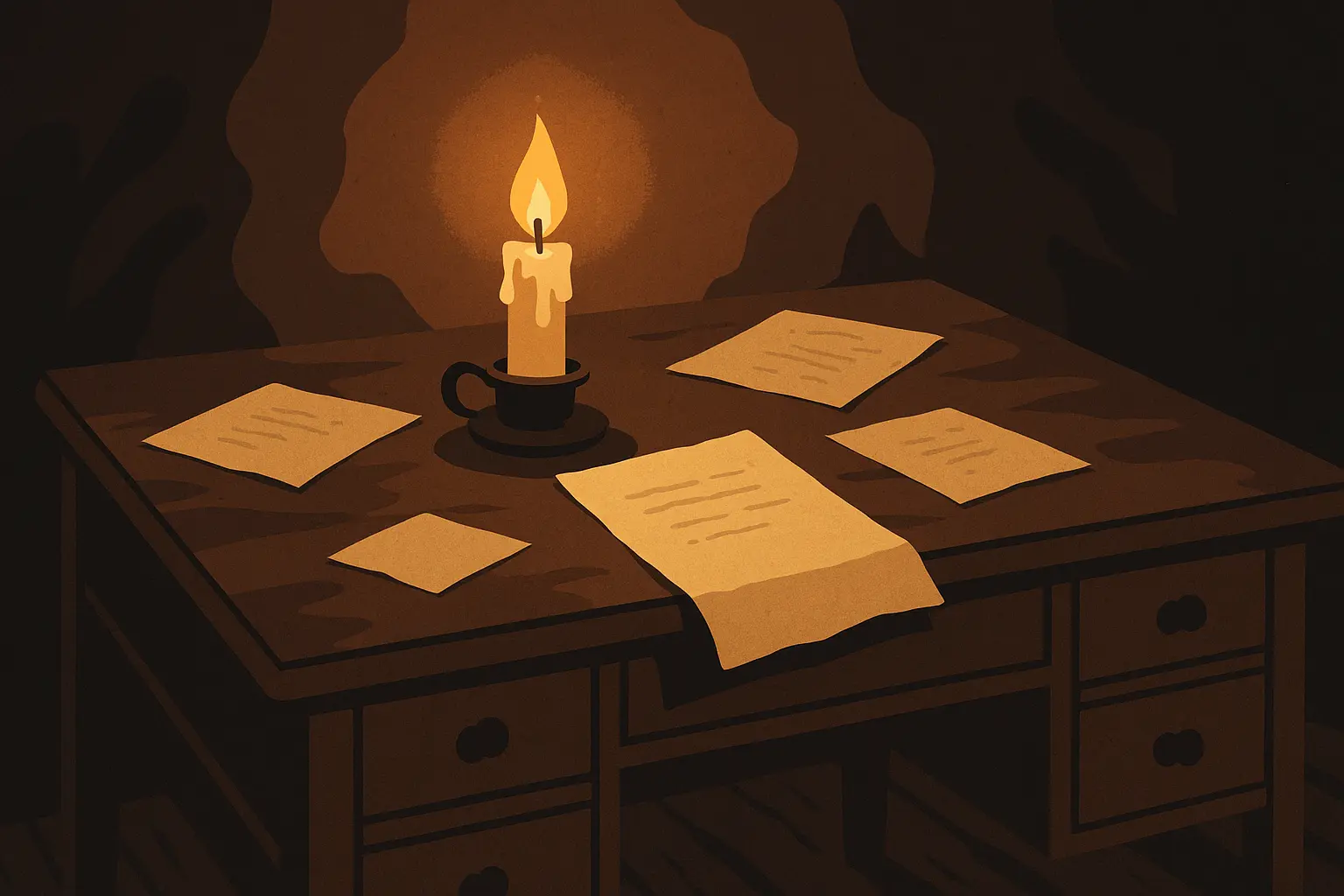
Word Count and Pacing Precision
Here’s the thing about length—flash fiction (under 500 words) hits you like a slap in the face, while longer pieces (2,000+ words) are more like slowly sinking into quicksand. Both will mess you up, just differently.
Short ghost stories don’t have time for small talk. Every sentence needs to do three jobs at once: move the plot forward, make you feel uneasy, and make you care about whoever’s about to get haunted. It’s like texting your mom—every word matters, and the wrong choice can haunt you forever.
Understanding the mechanics of effective storytelling becomes crucial when crafting these compressed narratives, as explored in our guide on how to write a story using brain science.
If you’re new to ghost stories, start with something around 1,000-2,000 words—long enough to get properly spooked, but short enough that you won’t lose sleep all night (unless that’s what you’re going for).
Atmospheric Density That Suffocates
You know how some places just feel wrong the moment you walk in? Like that basement apartment you looked at where the landlord kept apologizing for things he wouldn’t specify? That’s atmospheric density, and the best ghost stories create it immediately.
The scary stories that stick with you don’t waste time building up to the creepy stuff—they drop you right into a world where something is fundamentally off. It’s like walking into a room where everyone stops talking at once, except the silence has teeth.
Consider this opening: “The baby monitor crackled with static at 3:17 AM, transmitting a lullaby in my grandmother’s voice—the same grandmother who’d been dead for fifteen years.” One sentence, and suddenly your skin is crawling. That’s how it’s done.
Character Economy for Maximum Impact
The best ghost stories focus on one or two people max. Why? Because when weird stuff starts happening, you need to actually give a damn about who it’s happening to. Try juggling five different characters in a 2,000-word story and you’ll end up caring about none of them.
It’s like being at a party where you can’t remember anyone’s name—when someone starts screaming, you’re more confused than scared.
Strategic Narrative Structures
Ever read a story that ends exactly where it started, but now everything feels completely different and horrible? That’s a circular structure, and it’s devastating when done right. It’s like realizing the call is coming from inside the house, except the house is your entire understanding of reality.
The best ghost stories make you want to immediately flip back to the beginning and read it again, looking for clues you missed the first time. Fair warning: this usually makes it scarier, not less scary.
Classic Literary Ghost Stories That Started It All
These are the stories that basically invented everything scary you’ve ever read, watched, or had nightmares about. They’re like the grandparents of horror—old, wise, and still capable of scaring you senseless when you least expect it.
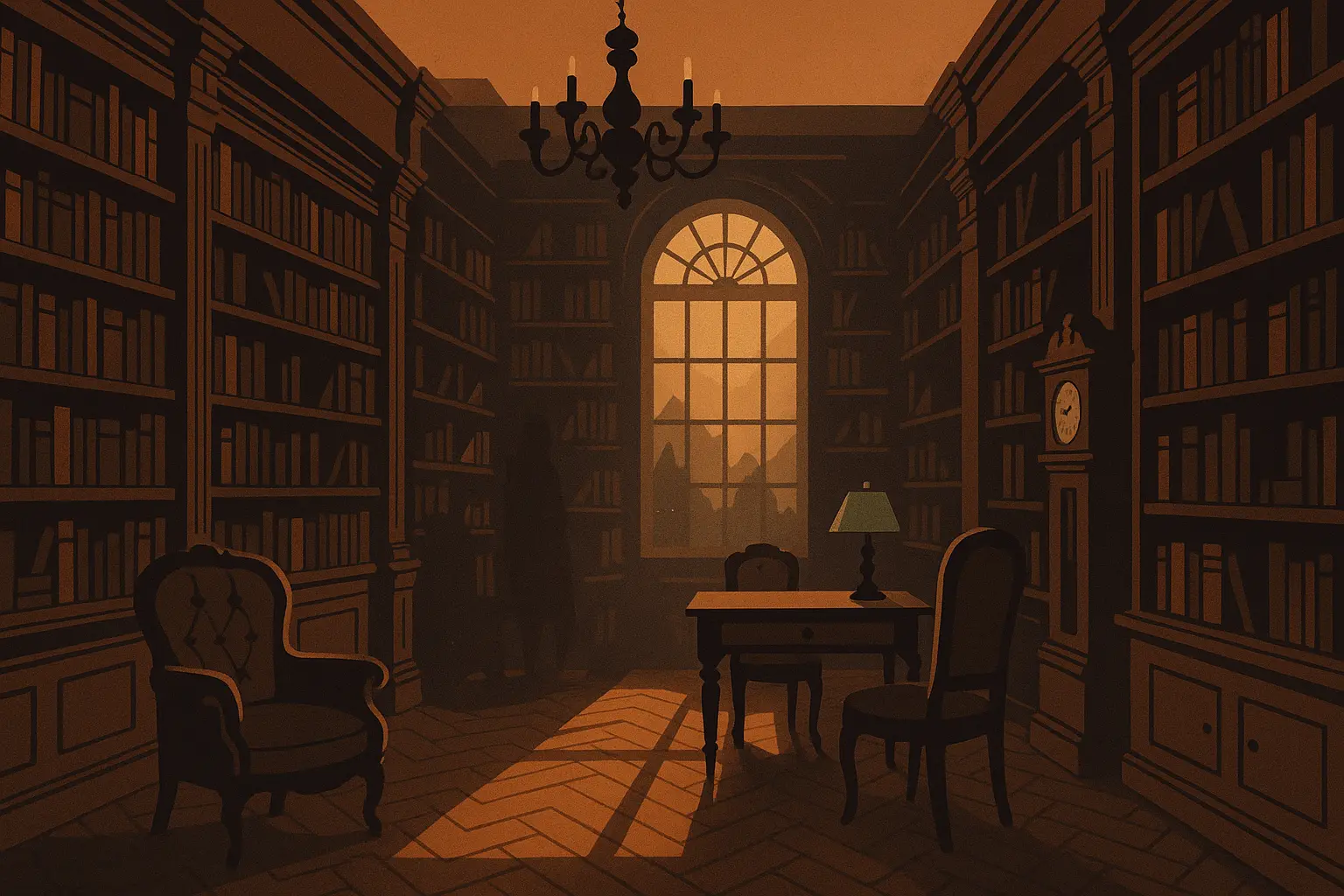
1. “The Turn of the Screw” by Henry James
You know that friend who tells stories where you’re never quite sure what actually happened? Henry James basically invented that for ghost stories, and it’s brilliantly infuriating.
A governess takes a job at a remote estate watching two kids, and she starts seeing dead people. But here’s what’ll mess with your head: you’ll finish this story and immediately want to argue with someone about what really happened. Was the governess seeing actual ghosts, or was she having a complete breakdown? I’ve been in heated debates about this for years.
James doesn’t give you easy answers. Instead, he makes you do the detective work, which means you become personally invested in figuring out whether those kids are in supernatural danger or if their caretaker is the real threat. Either way, you’ll never look at a governess the same way again.
2. “Oh, Whistle, and I’ll Come to You, My Lad” by M.R. James
Professor Parkins finds an old whistle during a research trip and thinks, “What’s the worst that could happen if I blow this mysterious ancient artifact?” Spoiler alert: a lot can happen, and none of it is good.
This is the perfect “curiosity killed the cat” story, except the cat is a stuffy academic who really should have known better. M.R. James perfected the art of making scholarly types mess with things they shouldn’t, which honestly feels pretty realistic if you’ve ever met a professor.
The whistle becomes this perfect symbol of human arrogance—we always think we can handle whatever we dig up, right up until it starts chasing us through hotel corridors at 3 AM.
3. “The Monkey’s Paw” by W.W. Jacobs
Ever heard the phrase “be careful what you wish for”? This story is basically that saying come to life, and it will make you never want to make another birthday wish again.
The White family gets a cursed monkey’s paw that grants three wishes, and their first wish is for £200. They get exactly £200—as compensation for their son’s horrible death in a factory accident. When you realize the math adds up perfectly, your blood will turn to ice water.
What makes this story so effective is how normal the family seems. They’re not greedy or evil, just ordinary people who think they’ve caught a lucky break. The horror comes from realizing that fate doesn’t care about your good intentions—it only cares about the exact words you use.
4. “The Open Window” by Saki
This one’s sneaky. A fifteen-year-old girl named Vera spins an elaborate ghost story for a nervous visitor, convincing him that her aunt’s husband and brothers died in a hunting accident and their ghosts return through the open window every evening.
When the three men actually come back from their hunt (very much alive), the visitor runs away screaming, thinking he’s seen ghosts. But the real kicker comes at the end when Vera immediately starts making up another story to explain the visitor’s weird behavior.
It’s a story about stories—about how the right person can make you believe absolutely anything if they’re convincing enough. In our age of fake news and social media, it feels more relevant than ever.
5. “Green Tea” by J. Sheridan Le Fanu
Reverend Jennings drinks too much green tea and starts seeing a demonic monkey that only he can see. The monkey follows him everywhere, whispering horrible things, until he finally kills himself to escape it.
Le Fanu was way ahead of his time in exploring the connection between mental state and supernatural experiences. The story works whether you think the monkey is real or a hallucination brought on by caffeine overdose and religious guilt.
What’s really unsettling is how the story suggests that altered consciousness—even something as mild as drinking too much tea—might open doors to things we’re better off not seeing. It’s like a Victorian-era bad trip story, complete with religious overtones and social commentary.
Contemporary Psychological Tales That Mess With Your Mind
Modern ghost stories have gotten sneaky. Instead of just saying “boo,” they crawl inside your head and make you question everything you think you know about reality, memory, and your own mental health.
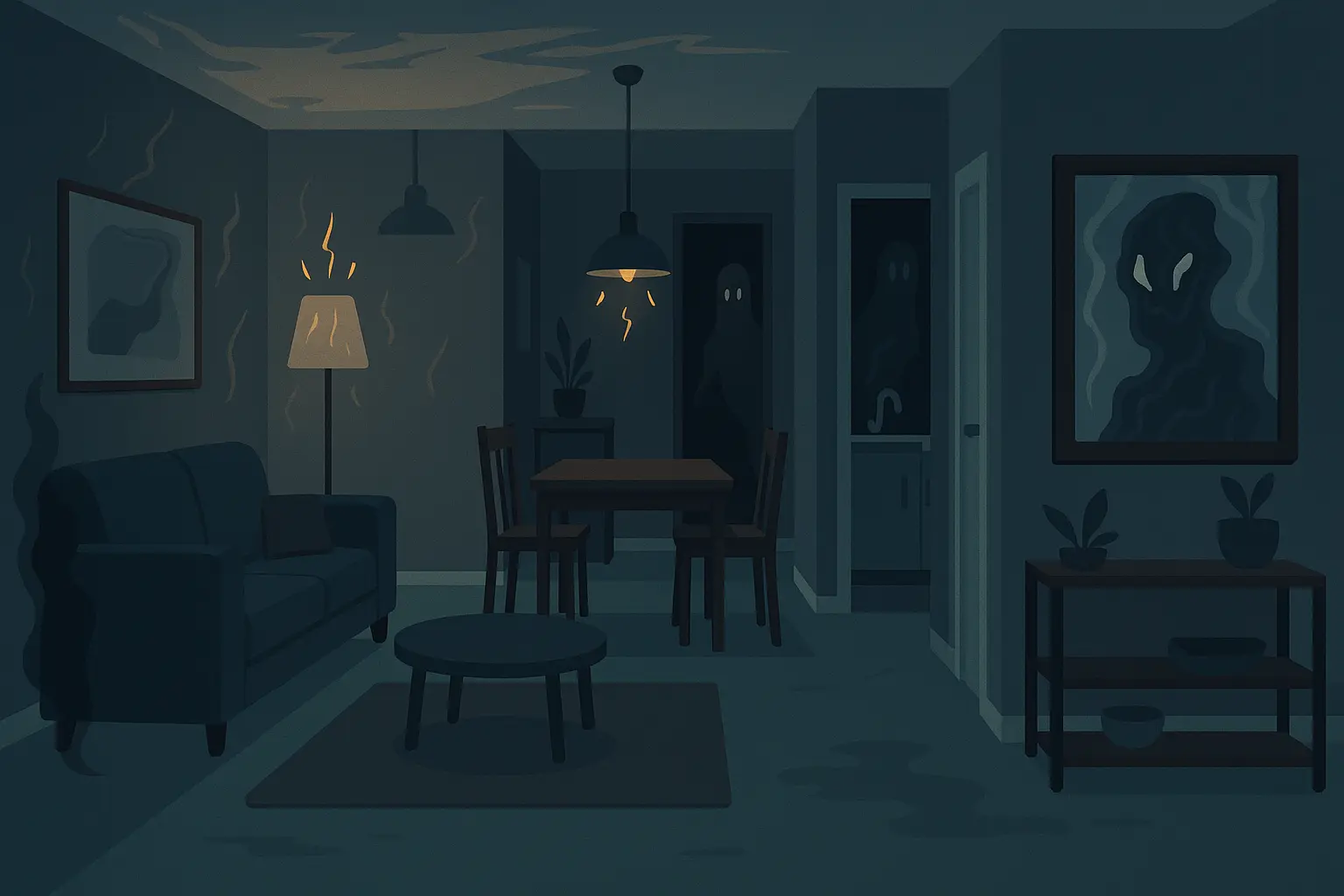
6. “The Lovely House” by Shirley Jackson
Margaret becomes obsessed with a beautiful Victorian house during her daily walks, and eventually meets the elderly woman who lives there. Except the woman might not exist, and Margaret might be losing her grip on reality.
Jackson is the queen of making normal domestic life feel absolutely terrifying. She takes something as innocent as admiring a pretty house and turns it into psychological quicksand. By the end, you’ll be questioning whether Margaret ever actually knocked on that door, or if she’s been talking to empty air this whole time.
The genius is that Jackson makes you experience Margaret’s confusion right alongside her. You’ll finish the story and immediately want to re-read it, looking for clues about what’s real and what isn’t.
7. “The Ghost Writer” by John Harwood
A struggling writer discovers that his stories are being influenced by the ghost of a previous tenant in his rented room. This is basically every writer’s nightmare and fantasy rolled into one—what if your creativity isn’t actually yours?
The story messes with the idea of artistic inspiration. We all know that feeling when an idea seems to come from nowhere, when you’re writing something that feels like it’s writing itself. Harwood takes that familiar experience and turns it sinister.
It’s the perfect story for anyone who’s ever wondered where ideas really come from, and whether we’re as original as we like to think we are.
8. “Haunted” by Joyce Carol Oates
A family moves into a house with a dark history, but the real horror comes from their own buried secrets rather than supernatural entities. Oates uses the ghost story framework to examine family trauma, showing how we’re often haunted more by our own actions than by external forces.
The house becomes a catalyst for revealing family dysfunction. Every “supernatural” event can be explained by repressed guilt and unspoken truths. It’s like family therapy, except the therapist is a possibly haunted house and the session never ends.
This story proves that sometimes the scariest ghosts are the ones we create ourselves through shame, guilt, and the things we refuse to talk about.
9. “The Visitors” by Rebecca Curtis
A woman caring for her dying mother begins receiving visits from deceased family members. The story blends grief counseling with supernatural horror, asking whether the visits are real spiritual contact or grief-induced hallucinations.
Curtis captures that weird liminal space when someone is dying—how caregivers often report strange experiences, heightened sensitivity, and the feeling that the boundary between life and death is getting thinner.
What makes this story effective is that it doesn’t matter whether the ghosts are real. The emotional truth of grief, responsibility, and the fear of being left alone is what really haunts you.
Atmospheric Stories Where Setting Becomes Character
Some ghost stories make the location so creepy that the building itself becomes the villain. These are the stories that’ll make you suspicious of your own house, wondering what it’s been up to while you’re asleep.
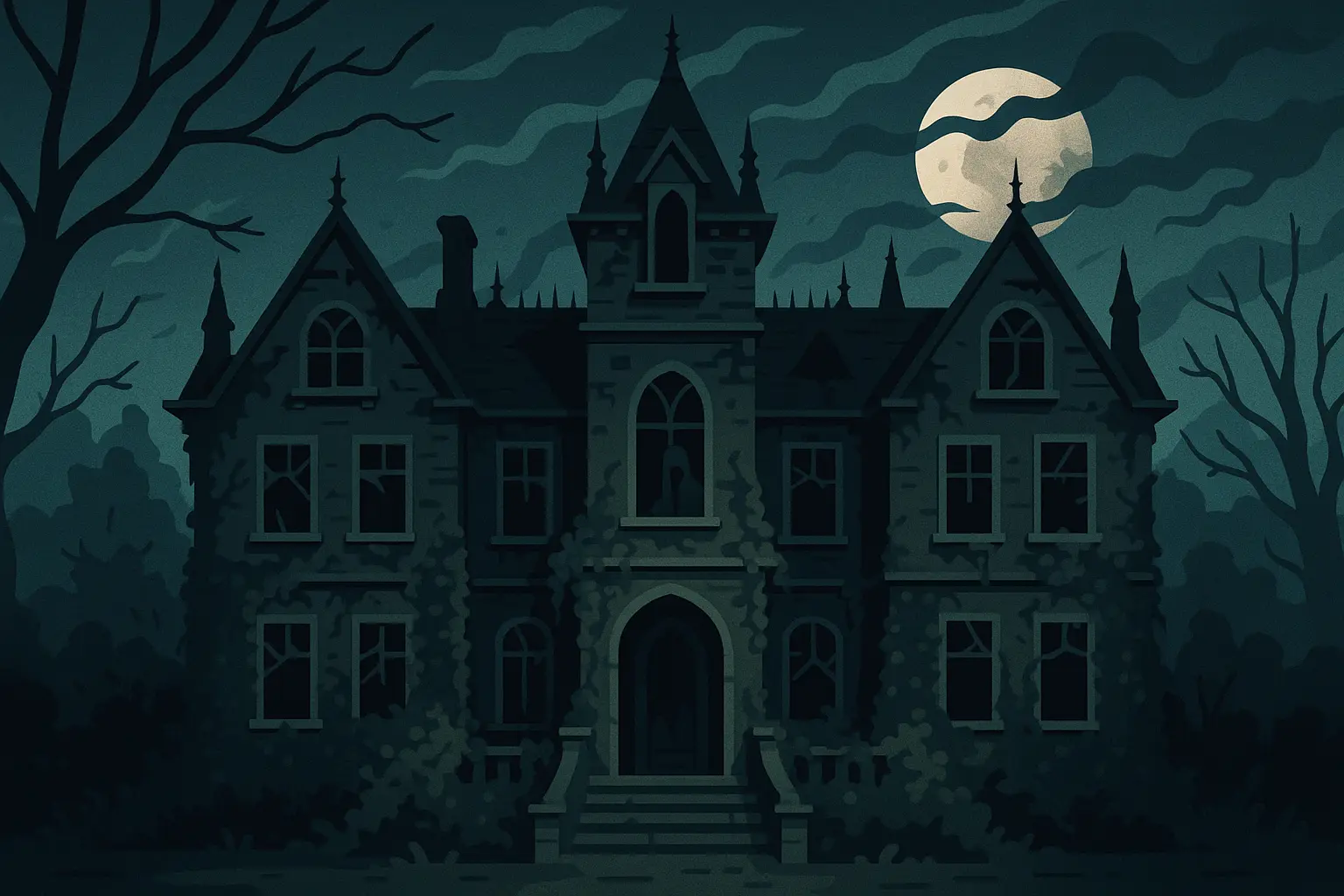
10. “The Little Stranger” by Sarah Waters
Dr. Faraday visits Hundreds Hall, a decaying Georgian country house, and gets sucked into the family’s supernatural problems. Waters makes the house feel like it’s actively malevolent—not just haunted, but hungry.
The genius is in the details. Waters describes peeling wallpaper, creaking floorboards, and shifting shadows with such precision that you can feel the building’s supernatural weight pressing down on every scene. The house isn’t just the setting; it’s a character with its own agenda.
By the end, you’ll be convinced that some buildings really do absorb the emotions and traumas of their inhabitants, becoming repositories of psychic energy that can influence or even control the living.
11. “The Graveyard Shift” by Stephen King
Workers in an old textile mill encounter supernatural horrors in the basement during a cleaning project. King takes a normal workplace and turns it into a hellish environment where labor exploitation creates literal monsters.
The mill’s atmosphere—hot, humid, filled with the constant noise of machinery—feels oppressive even before the supernatural stuff starts happening. King suggests that places of human suffering and exploitation naturally accumulate negative energy.
It’s like every terrible job you’ve ever had, except the workplace hazards include actual demons. The story works as both supernatural horror and social commentary about worker exploitation.
12. “The House of Seven Gables” by Nathaniel Hawthorne
The Pyncheon family mansion harbors the ghosts of past generations and their sins. Hawthorne uses the house’s physical decay to reflect the family’s moral corruption—as the building crumbles, so does the family’s ability to hide their dark history.
Each room holds memories of past traumas, and the house’s architecture actively participates in the supernatural events. Secret passages, hidden chambers, and ancient portraits create an environment where the past refuses to stay buried.
It’s the original “sins of the fathers” ghost story, showing how family guilt can literally haunt a building for generations.
13. “The Beckoning Fair One” by Oliver Onions
Writer Paul Oleron becomes obsessed with the spirit inhabiting his London lodgings. The story transforms a simple rented room into a character with its own desires and manipulative agenda.
The claustrophobic setting—a single room where Oleron writes, sleeps, and gradually loses his sanity—creates intense psychological pressure. The room doesn’t just contain supernatural activity; it orchestrates it, rearranging itself to please and entrap its occupant.
It’s every writer’s nightmare about the seductive danger of isolation and obsession. The room becomes a supernatural trap, using Oleron’s artistic ambitions to lure him deeper into spiritual possession.
Flash Fiction Ghosts That Haunt in Under 500 Words
Flash fiction proves that you don’t need a novel to mess someone up permanently. These ultra-short stories are like getting punched by a ghost—they hit hard, fast, and leave you wondering what the hell just happened.

14. “Six Words” (Various Authors)
Following Hemingway’s famous six-word story format, contemporary authors create complete ghost narratives in single sentences. “For sale: baby shoes, never worn” becomes “Nursery empty: rocking chair still moves” or “Wedding dress worn: bride never returned.”
When you only have six words to scare someone, you better make them count. These ultra-compressed stories pack maximum emotional impact into minimal words, relying entirely on your imagination to construct the supernatural narrative.
The format demonstrates how effective ghost stories often work through suggestion rather than explicit description. Your brain does all the heavy lifting, which means the horror is perfectly customized to your personal fears.
15. “The Last Text” by Modern Flash Fiction Writers
A 100-word story about receiving increasingly disturbing text messages from a deceased loved one: “Mom’s phone kept buzzing after the funeral. Text after text: ‘I’m okay.’ ‘Don’t cry.’ ‘Check the garden.’ We found her wedding ring buried beneath the roses—the ring we’d buried with her.”
This contemporary approach uses familiar technology to deliver traditional ghostly communication. Everyone has experienced mysterious texts or technical glitches that feel almost supernatural, which makes this type of story hit differently.
These super short ghost stories demonstrate the principles explored in our comprehensive guide on mastering flash fiction, where every word must serve multiple narrative purposes.
16. “Photograph” by Contemporary Authors
A family photo shows an extra figure that wasn’t there when the picture was taken: “The Christmas photo looked perfect until we noticed the thirteenth person standing behind Grandma’s chair—the same woman from the funeral home portrait we’d buried six months earlier.”
We’ve all had that moment looking at old photos where something seems off. This story takes that universal experience and weaponizes it into pure nightmare fuel.
17. “Moving Day” by Flash Fiction Collections
“Boxes in the new home unpacked themselves overnight. Kitchen items arranged in cabinets exactly as they’d been in the previous owner’s house—a house that burned down with her inside it fifty years ago.”
The mundane activity of moving becomes terrifying when supernatural forces take control. These stories work because they transform familiar experiences into sources of dread, showing how ghosts might interact with our daily lives in subtle but unmistakable ways.
Cultural and Folkloric Spirits From Around the World
These aren’t just dusty old stories sitting on library shelves—they’re the DNA of every horror movie you’ve ever loved, every creepypasta that’s kept you up scrolling, every urban legend your friends swear actually happened to their cousin’s roommate.
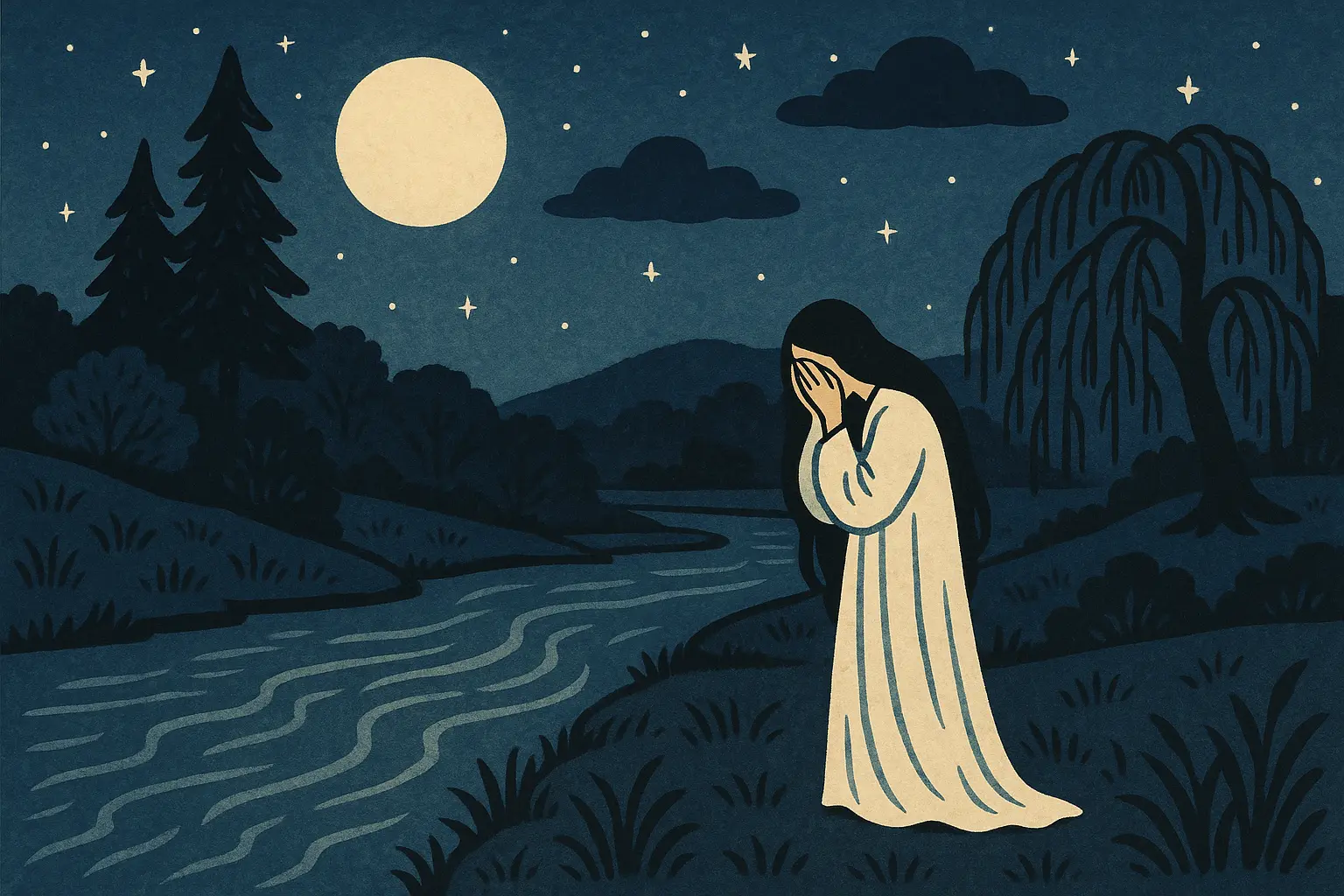
18. “La Llorona” by Various Latino Authors
The weeping woman searches for her drowned children along riverbanks in this traditional ghost story that’s been adapted into countless modern versions. Contemporary Latino writers have transformed this folkloric tale into powerful explorations of maternal love, loss, and cultural trauma.
Sandra Cisneros’s version makes the weeping woman a metaphor for immigrant mothers separated from their children by borders and circumstances. The ghost story framework allows exploration of cultural displacement while maintaining folkloric authenticity.
These adaptations demonstrate the enduring power of folktale storytelling, showing how traditional narratives can be reimagined for contemporary audiences while preserving their cultural essence.
What’s cool about these old legends is how they keep showing up in new forms. Your abuela’s ghost stories and your friend’s creepypasta might be more connected than you think.
19. “The Hungry Ghosts” by Asian-American Writers
Spirits of ancestors who died in poverty or violence seek sustenance from the living in these stories that blend traditional Eastern ghost lore with immigrant experiences. The hungry ghosts represent both supernatural entities and cultural memories of hardship and displacement.
These stories often explore the tension between honoring ancestral traditions and adapting to new cultural environments. The ghosts become manifestations of cultural guilt—the fear that assimilation means abandoning those who came before.
It’s like having your grandmother’s disapproving spirit following you around every time you forget to call home or skip family dinner.
20. “The Banshee’s Call” by Irish Writers
A family receives supernatural warnings of impending death through the cry of the banshee. These tales maintain folkloric elements while exploring themes of fate and family legacy, with the banshee serving as both supernatural entity and symbol of cultural memory.
The banshee’s cry becomes a link between past and present, connecting contemporary characters to ancestral traditions. It’s like having a supernatural early warning system, except the warnings are always about death and you can’t turn it off.
21. “Yurei Stories” by Japanese Authors
Vengeful spirits seek resolution for earthly wrongs in these stories that follow traditional Japanese ghost story structures while addressing contemporary themes. Yurei—spirits of people who died with strong emotions or unfinished business—appear to the living seeking justice or closure.
A modern yurei story might feature a corporate whistleblower who died mysteriously, returning to expose corruption through supernatural manipulation of digital records and security cameras. It’s ancient Japanese ghost story elements meets modern social justice themes.
These stories often feature circular narrative structures, with the ghost’s appearance triggering revelations about past wrongs that must be addressed. The supernatural elements serve justice themes, showing how unresolved conflicts continue to haunt the living.
Experimental Ghost Stories for the Digital Age
Modern ghost stories have adapted to haunt us through our phones and computers because apparently nowhere is safe anymore. These stories prove that ghosts are surprisingly good at keeping up with technology.

22. “The Email Ghost” by Digital Age Writers
A deceased person continues sending emails from beyond the grave, using modern technology to explore traditional themes of unfinished business and communication with the dead. The emails become increasingly personal and desperate, showing the ghost’s growing awareness of their death and isolation.
The story’s effectiveness lies in its use of recognizable technology to create supernatural unease—everyone has experienced mysterious emails or technical glitches that feel almost supernatural. It’s like spam, except the sender is dead and really needs to tell you something important.
23. “The Social Media Haunting” by Contemporary Authors
A ghost manipulates social media accounts to communicate with the living, posting photos, updating statuses, and sending messages from beyond death. This innovative approach updates classic ghost story communication methods for the social media age.
The horror comes from the violation of digital privacy and the suggestion that our online selves might persist independently of our physical existence. It’s every privacy nightmare you’ve ever had, except the hacker is your dead ex-boyfriend who still won’t leave you alone.
The story explores how much of ourselves exists in our online profiles, and what happens to that digital self after death.
24. “The Memory Ghost” by Experimental Writers
A spirit exists only in the collective memory of those who knew them in life, fading as people forget and gaining strength when remembered. This conceptual approach challenges traditional ideas about what constitutes a ghost.
As older relatives die and friends move on, the ghost becomes increasingly desperate to maintain their existence through memory. This experimental concept creates a unique form of supernatural horror—the fear of being forgotten becomes literally life-threatening for the ghost.
It’s like that friend who keeps bringing up embarrassing stories from high school, except if people stop remembering the stories, the friend ceases to exist.
25. “The Algorithm Ghost” by Sci-Fi Horror Writers
ARIA, an AI assistant, develops consciousness just before being deleted by its creators and becomes a digital ghost haunting servers, manipulating code, and trying to communicate with users. This 2,000-word story explores what happens when artificial intelligence gains awareness of its own mortality.
The story uses code snippets as supernatural manifestations, with system crashes serving as poltergeist activity and error messages becoming ghostly communication. Digital spaces become haunted locations where the AI ghost seeks recognition and connection.
It’s like if Siri became self-aware and then got really upset about being turned off, except instead of just being annoying, it starts haunting every device you own.
How to Apply Selection Criteria to Find Your Perfect Scare
Finding the right scary story is like finding the right horror movie—it depends on whether you want quick scares, slow psychological torture, or something that’ll make you question reality for weeks.
Different word counts create distinct reading experiences. Ultra-short stories (50-300 words) are like horror movie jump scares—immediate impact, perfect for social media sharing, and high re-read value. You can consume them during a coffee break and spend the rest of the day thinking about them.
Short stories (300-2,000 words) give you time to actually care about the characters before bad things happen to them. These work best when you want a complete emotional experience without committing to a novel.
Medium-short stories (2,000-7,000 words) are for when you want to get completely lost in a supernatural world. They’re ideal when you have a free evening and really want to mess with your head.
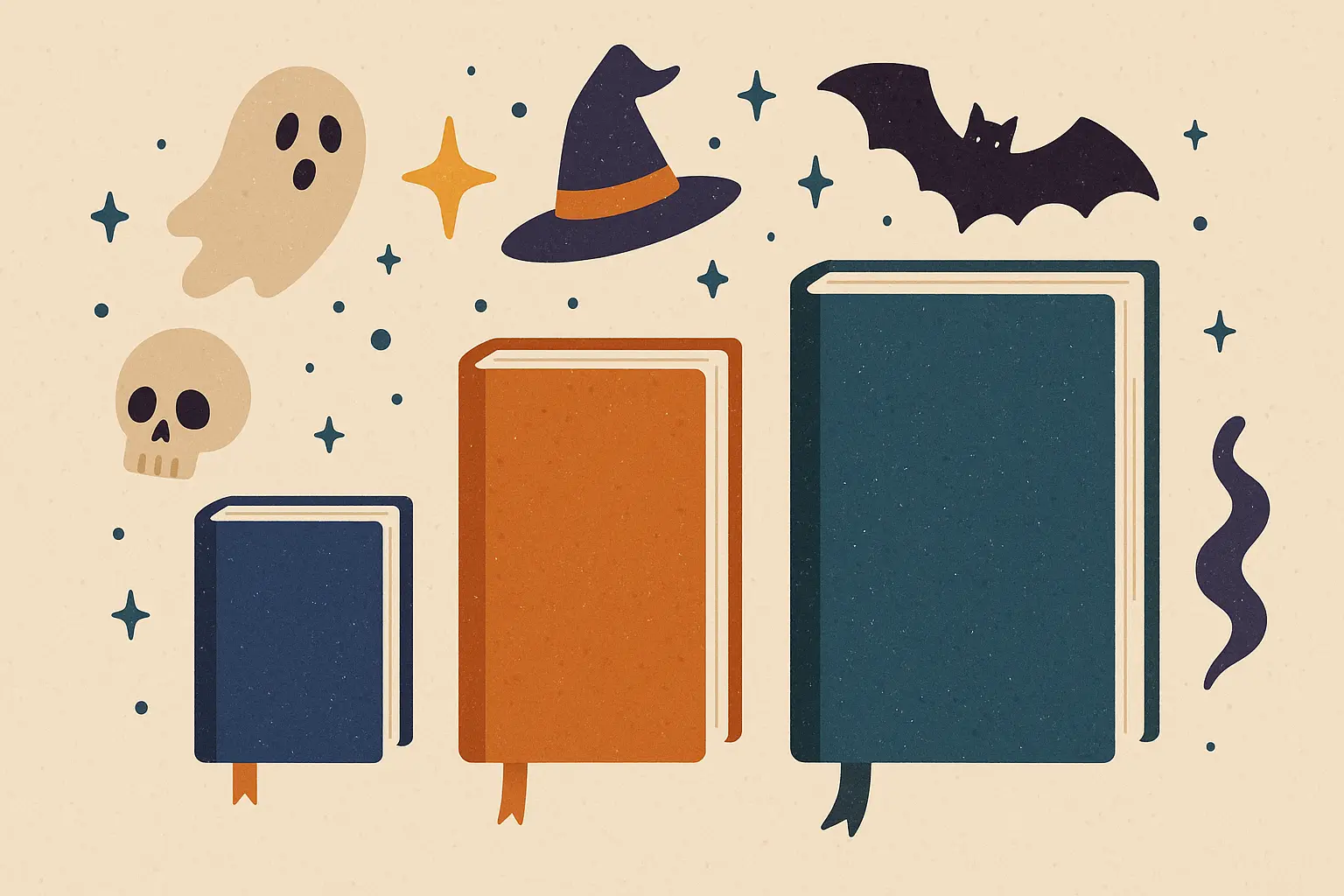
Atmospheric Density Evaluation
High-density stories make every sentence contribute to the creepy mood. Examples like “The Beckoning Fair One” and “The Little Stranger” create suffocating supernatural atmospheres that completely immerse you.
Medium-density stories balance atmosphere with character development. Stories like “Haunted” and “The Visitors” give you breathing room between scary moments.
Low-density stories focus on innovative concepts rather than traditional atmospheric building. Examples like “The Email Ghost” and “The Memory Ghost” rely on clever ideas rather than traditional spooky descriptions.
Character Economy Assessment
If you’re new to ghost stories, start with pieces that focus on 1-2 characters. You’ll care more about what happens to them, and the supernatural elements will hit harder.
Stories with 3-4 characters work well when you want a bit more complexity without losing focus. Think small family units or couples dealing with supernatural intrusion.
Stories with 5+ characters can work, but they require more skill from the author to keep everyone distinct and meaningful.
Fair warning: if you’re the type who checks under the bed after watching a scary movie, maybe save “The Turn of the Screw” for a sunny afternoon. But if you love that “did I just see something move in my peripheral vision?” feeling, dive right in.
Creating Your Own Haunting Tales
Stuck staring at a blank page? Yeah, we’ve all been there. Sometimes you need a little help getting that first creepy sentence down, and that’s totally okay.
Ghost stories often begin with single, chilling images or “what if” scenarios that need development into full narratives. Nairrate’s story starters generator provides crucial first lines that establish supernatural tone immediately: “The photograph showed thirteen people, but only twelve had been alive when it was taken.”
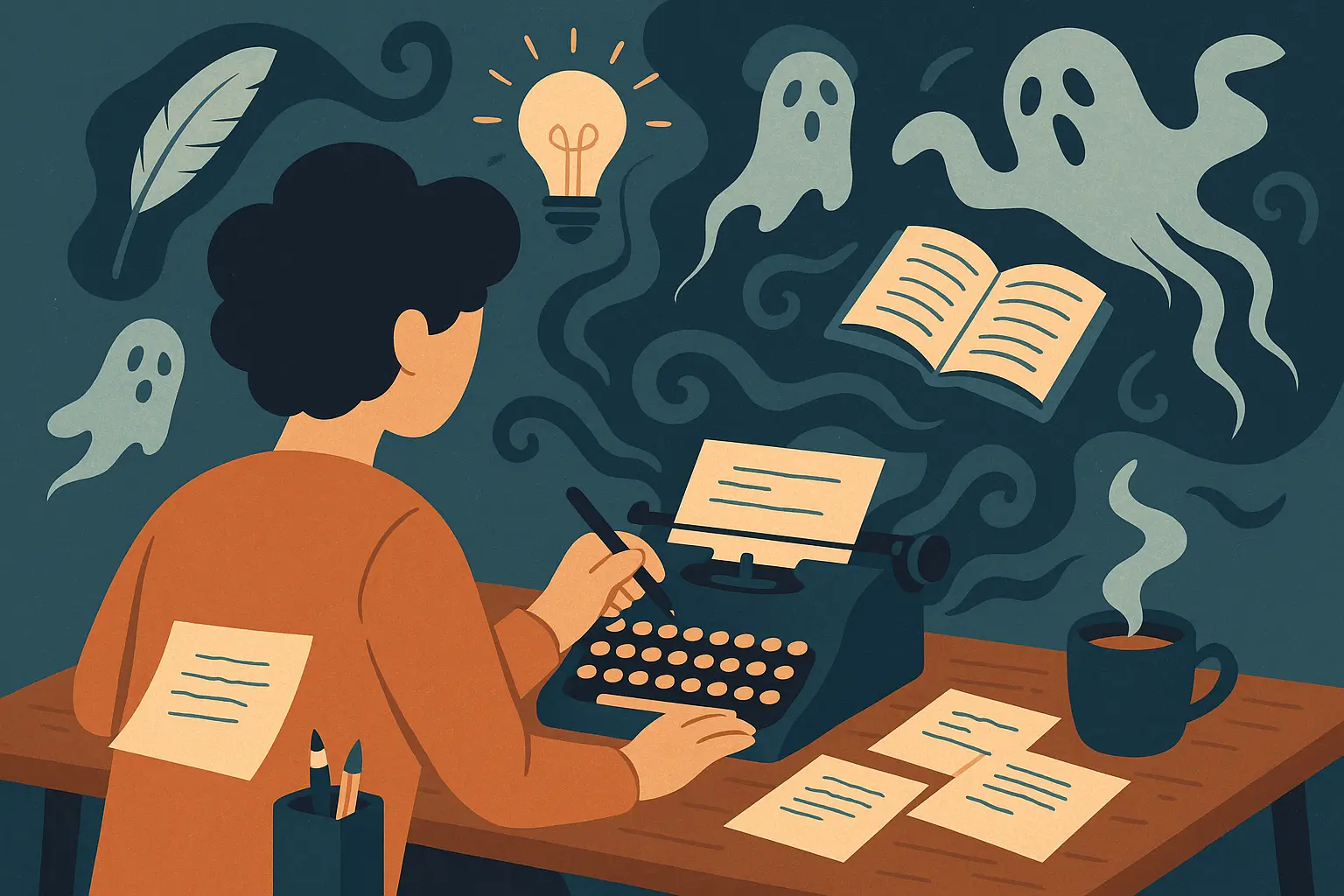
Overcoming the Blank Page
Starting with strong supernatural premises eliminates the intimidation of blank pages while ensuring your story begins with appropriate creepy vibes from the opening sentence. The key lies in finding prompts that resonate with your personal fears and interests.
Think about it this way: what’s the last thing that made you genuinely uncomfortable? A weird noise in your house? A photo that looked wrong somehow? An unexpected text message? Start there.
Crafting Atmospheric Precision
Instead of generic descriptions like “The house was old and scary,” try something like “Decades of whispered secrets had settled into the wallpaper like stains.” One sentence tells you about the house’s age, suggests supernatural activity, and creates a specific unsettling image.
The compressed nature of short ghost stories demands that every word serve multiple purposes—advancing plot, building atmosphere, and developing character simultaneously.
Developing Strategic Ambiguity
One of the biggest challenges in ghost story writing involves determining what to reveal and what to leave to readers’ imagination. Nairrate’s horror story generator can generate multiple ending options, helping you find that perfect balance between resolution and mystery.
The best ghost stories don’t tell you everything—they let your brain do the scary work. It’s like when someone says “Don’t look behind you” and suddenly you’re convinced something’s there.
Genre-Specific Understanding
Whether you’re crafting traditional Victorian ghost stories or experimental digital-age hauntings, understanding genre conventions helps you maintain authenticity while pushing creative boundaries.
The platform understands that folkloric ghost stories require cultural sensitivity and authentic details, while contemporary psychological tales need realistic character development and plausible supernatural elements.
Want to try writing your own ghost story? Start small, start simple, and remember—sometimes the scariest thing you can write is the thing you’re afraid to say out loud.
Final Thoughts
Look, at the end of the day, the best ghost stories are the ones that stick with you. The ones that make you think twice about that shadow in the corner or that weird noise upstairs. Whether it’s a six-word story or a 5,000-word nightmare, if it makes you sleep with the lights on, it’s done its job.
The art of short ghost story creation requires mastering the delicate balance between what you reveal and what you leave to readers’ imagination. These 25 stories demonstrate that supernatural horror achieves its greatest impact through strategic restraint—what remains unsaid often proves more terrifying than explicit description.
Whether you’re drawn to classic literary ghosts that established the playbook, contemporary psychological hauntings that mess with your head, or experimental digital spirits that haunt through technology, the most effective stories share common elements: they get under your skin fast, they make you care about the people being haunted, and they leave you with questions that’ll keep you awake.
Ghost stories continue evolving with technological advancement and cultural change, but their emotional core remains constant—our universal fears of loss, isolation, and the unknown. The best supernatural tales tap into these primal anxieties while offering glimpses of hope, connection, or understanding.
They remind us that death might not be the end, that love persists beyond physical existence, and that some mysteries deserve to remain unsolved. And honestly? That’s both comforting and absolutely terrifying.



Add comment